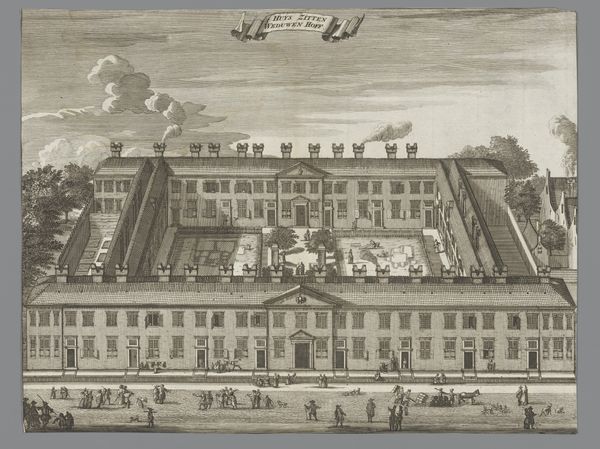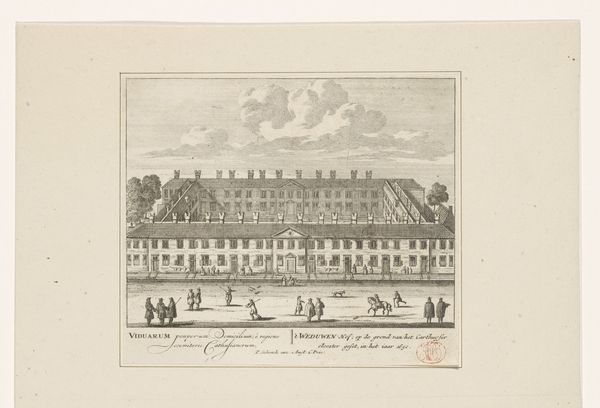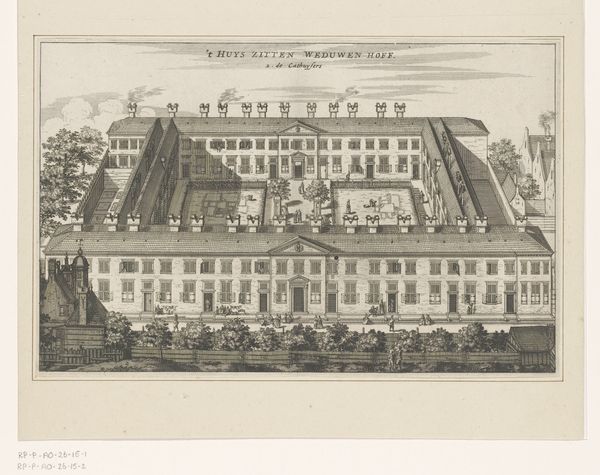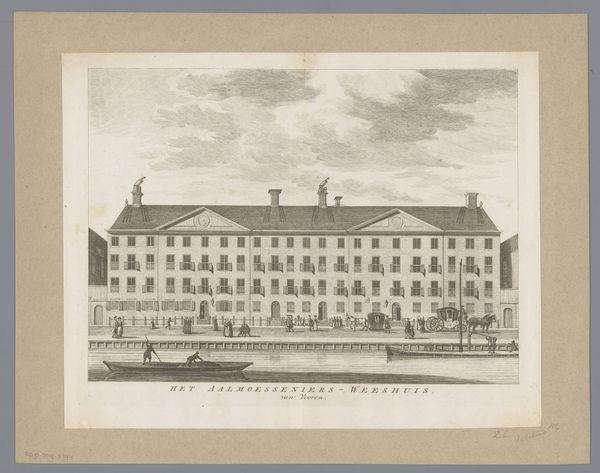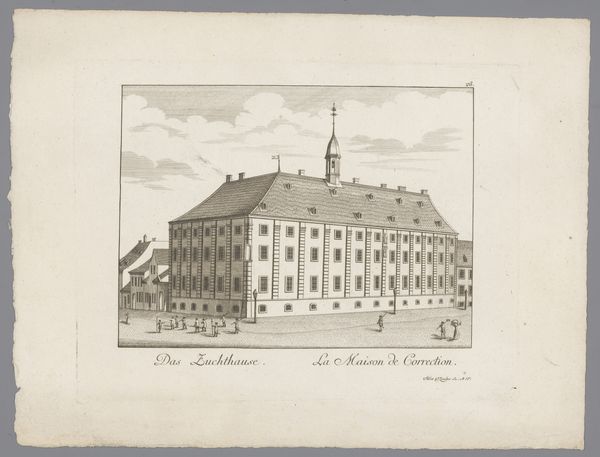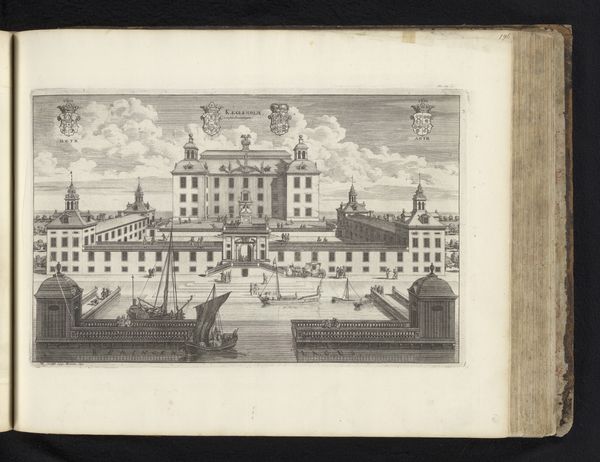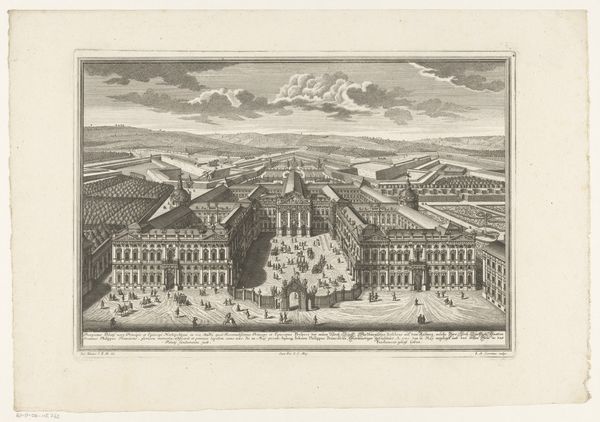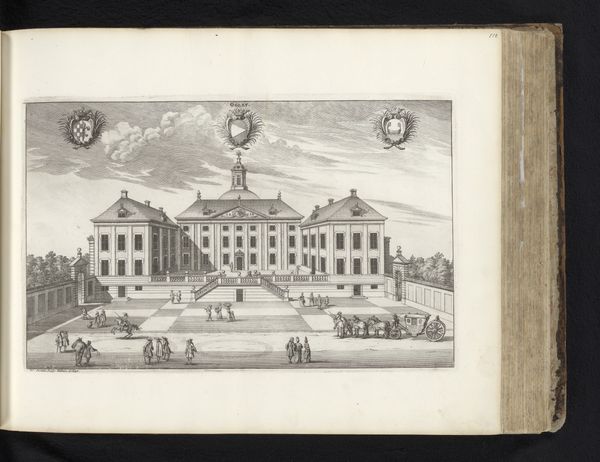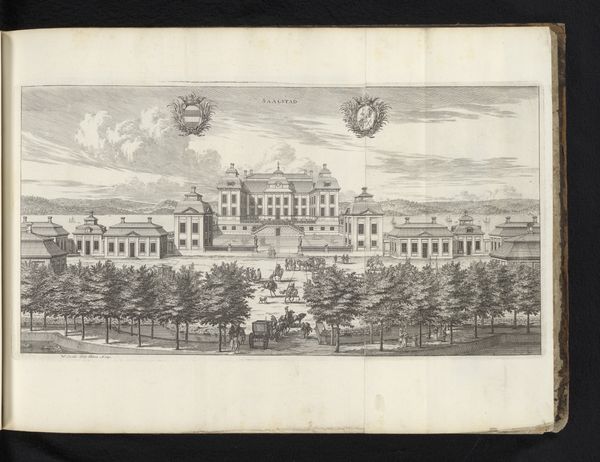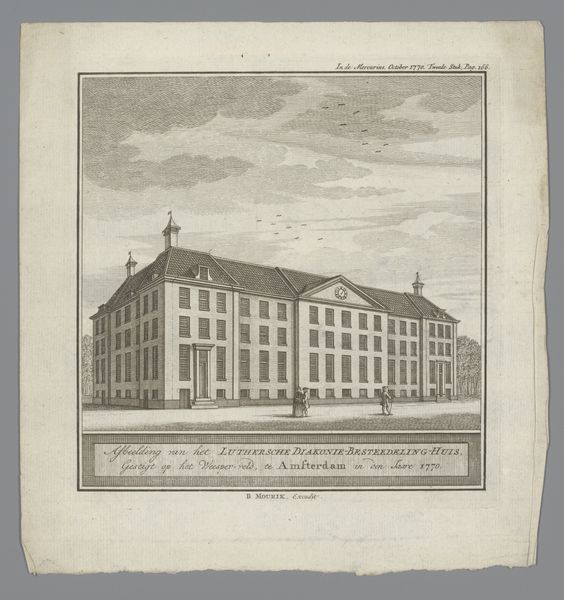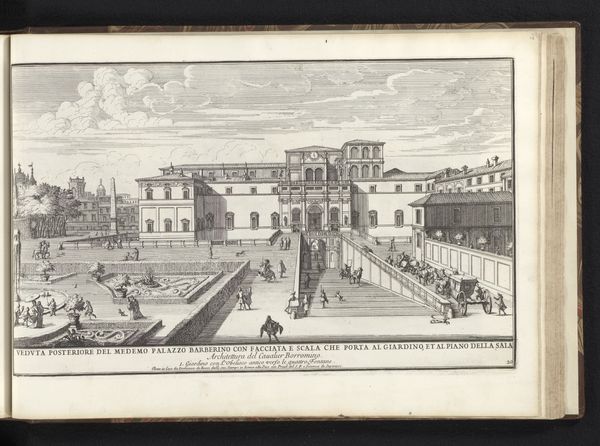
print, engraving, architecture
#
baroque
# print
#
landscape
#
cityscape
#
engraving
#
architecture
Dimensions: height 264 mm, width 340 mm
Copyright: Rijks Museum: Open Domain
Editor: Here we have an engraving from 1693 entitled "Gezicht op het Kartuizerhof in Amsterdam," depicting a cityscape. I am really drawn to the composition. The building appears quite imposing and symmetrical, which gives a sense of formality, almost a constructed perfection. How do you interpret this work? Curator: Indeed. The organizing principle appears to be symmetry. Notice the rigorous horizontal and vertical axes, reinforcing stability. Consider how this emphasis affects your perception; the proportional relationships dictate how we, as viewers, engage with the depicted subject. Editor: I see what you mean! The perfect symmetry creates that feeling of formality. So, what about the details, like the figures in the foreground? Curator: Even the arrangement of the figures, and the carefully considered depiction of perspectival recession—does that not strike you as a conscious arrangement reinforcing the structural unity? What sort of semiotic weight do you perceive within that foreground, contrasted against the architectural subject? Editor: Now that you point it out, they're carefully placed. They seem to animate the foreground, drawing our eyes up to the more static architecture beyond. It balances that perfect symmetry a bit, making it feel a bit more alive. Curator: Precisely. Observe too, the interplay of line. Sharp, decisive lines define architectural form, in opposition to the more subdued texture describing natural forms. Editor: So it’s all about structure here? Thanks for walking me through it, I’m much better able to understand the piece now! Curator: Exactly! A formal analysis offers, let us say, a method of engaging with artistic endeavor beyond representation and, instead, concerning ourselves with intrinsic constructional relations.
Comments
No comments
Be the first to comment and join the conversation on the ultimate creative platform.
